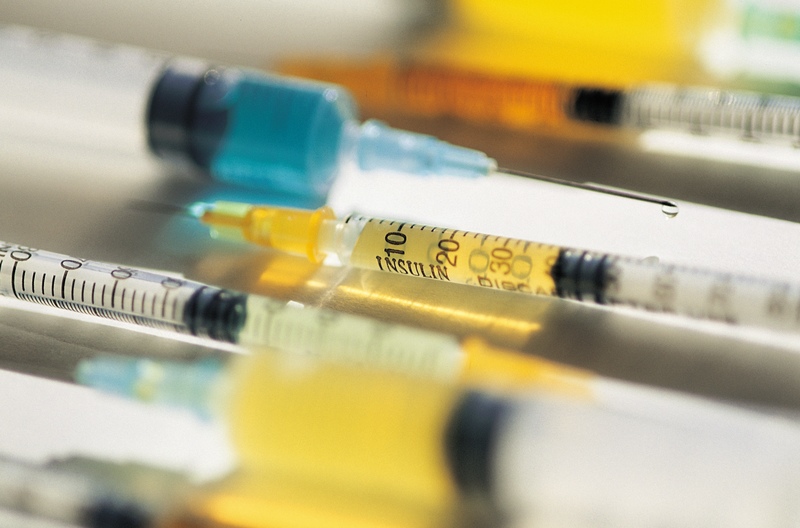
Here are some of the latest health and medical news developments, compiled by the editors of HealthDay:
More Than 10 Million Fisher-Price Toys Recalled
Safety concerns are behind the unprecedented recall of more than 10 million Fisher-Price tricycles, toys and high chairs.
The U.S. Consumer Product Safety Commission said Thursday that 7 million of the recalled products involve Fisher-Price Trikes and Tough Trikes toddler tricycles. Near the seat on the trikes is a plastic key that juts out and can cause injuries, including genital bleeding, according to the Associated Press.
The toy maker is also recalling more than 1 million Healthy Care, Easy Clean and Close to Me High Chairs, the commission said. Kids can be injured by pegs on the rear of the high chairs that are meant for tray storage.
Commission Chairwoman Inez Tenenbaum applauded Fisher-Price for “taking the right steps by agreeing to these recalls and offering consumers free repairs or replacement,” the AP said. However, she said toy makers must be more safety conscious before their products reach stores.
In addition, choking hazards prompted the recalls of more than 2.8 million other toys that have valves that can detach from inflatable balls. They include: Baby Playzone Crawl & Cruise Playground toys; Baby Playzone Crawl & Slide Arcade toys, Baby Gymtastics Play Wall toys; Ocean Wonders Kick & Crawl Aquarium toys; 1-2-3 Tetherball toys and Bat & Score Goal toys. About 100,000 Fisher-Price Little People Wheelies Stand ‘n Play Rampway toys are also being recalled because of wheels that can come off.
The company’s Web site at http://www.service.mattel.com has more information on the recalled products’ dates of sale and model numbers.
—–
U.S. Child Nutrition Bill Stalls in Congress
Supporters of the proposed U.S. child nutrition bill, a key feature of First Lady Michelle Obama’s campaign for healthier school lunches, will have to wait until after the November elections for a vote because of Congressional concerns over the use of food stamp dollars to pay for it.
The bill, designed to improve school lunches and enlarge food programs for low-income students, has been a longtime priority for Democrats and anti-hunger groups. But a provision that federal food-stamp funds be used to pay some of the $4.5 billion cost has led anti-hunger advocates and a sizable number of Democrats to switch sides on the issue, the Associated Press reported.
“It’s just plain wrong,” said Rep. Jim McGovern, D-Mass., a longtime advocate for childhood nutrition programs. “The way you are going to pay for a child nutrition bill is by dipping into people’s food stamps? Give me a break.”
When Congress resumes after the elections, proponents will again seek passage of the bill, which would be a first step toward putting healthier foods into schools. The U.S. Agriculture Department would ultimately decide what kinds of food could and could not be sold, the AP said.
—–
U.S. Takes Second Look at Medical Scanner Approvals
U.S. investigators are taking a second look at complaints that U.S. Food and Drug Administration managers pressured their scientists into approving possibly harmful high-tech medical scanners.
The criminal investigation into the allegations was closed last February, but a Department of Health and Human Services investigator said the agency is now looking at claims of mismanagement and violations of regulations, which are separate from criminal law, the Associated Press reported.
Nine FDA medical device reviewers charged in 2008 that agency administrators overruled their opinions without supporting research. When they made their concerns public, management attempted to intimidate them, they alleged, the AP said.
The whistleblowers had concerns about excessive radiation related to the use of MRIs, CT scanners and other medical devices that use radiation to identify or treat diseases, the AP reported.
—–
Doctors-in-Training Get Shorter Work Day
U.S. doctors-in-training will no longer work around the clock under new rules providing shorter work shifts and tighter supervision.
The new rules are meant to safeguard patient safety and provide a humanistic environment for student doctors, according to the Chicago-based Accreditation Council for Graduate Medical Education, the Associated Press reported.
The council approved the new standards, which affect more than 110,000 doctors-in-training at U.S. hospitals, on Tuesday.
Maximum hours will be cut for first-year residents only — to 16 hours from 24 hours. New doctors can still work up to 80 hours a week, but they will be encouraged to nap.
The rules, which take effect next July, also require medical residents to inform patients that more experienced doctors are supervising their work.

